1. Salida de onda sinusoidal pura;
2. Transformador toroidal de alta eficiencia y menor pérdida;
3. Pantalla LCD de integración inteligente;
4. Corriente de carga de CA ajustable de 0 a 20 A; configuración de la capacidad de la batería más flexible;
5. Tres tipos de modos de trabajo ajustables: CA primero, CC primero, modo de ahorro de energía;
6. Función de adaptación de frecuencia, se adapta a diferentes entornos de red;
7. Controlador PWM o MPPT incorporado opcional;
8. Se agregó la función de consulta de código de falla, lo que facilita al usuario monitorear el estado de operación en tiempo real;
9. Admite generador diésel o de gasolina, se adapta a cualquier situación eléctrica difícil;
10. Puerto de comunicación RS485/APP opcional.
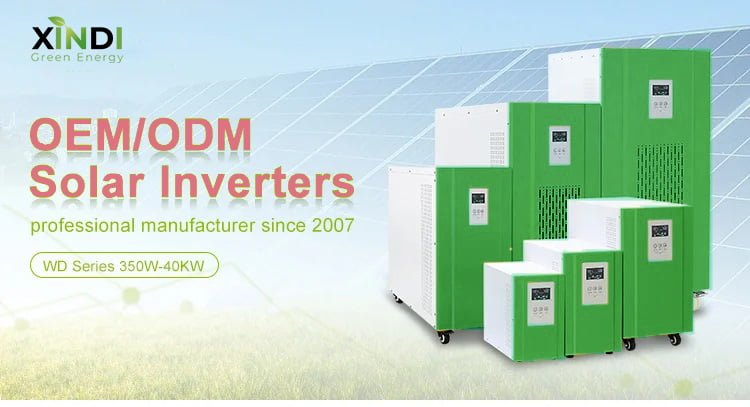
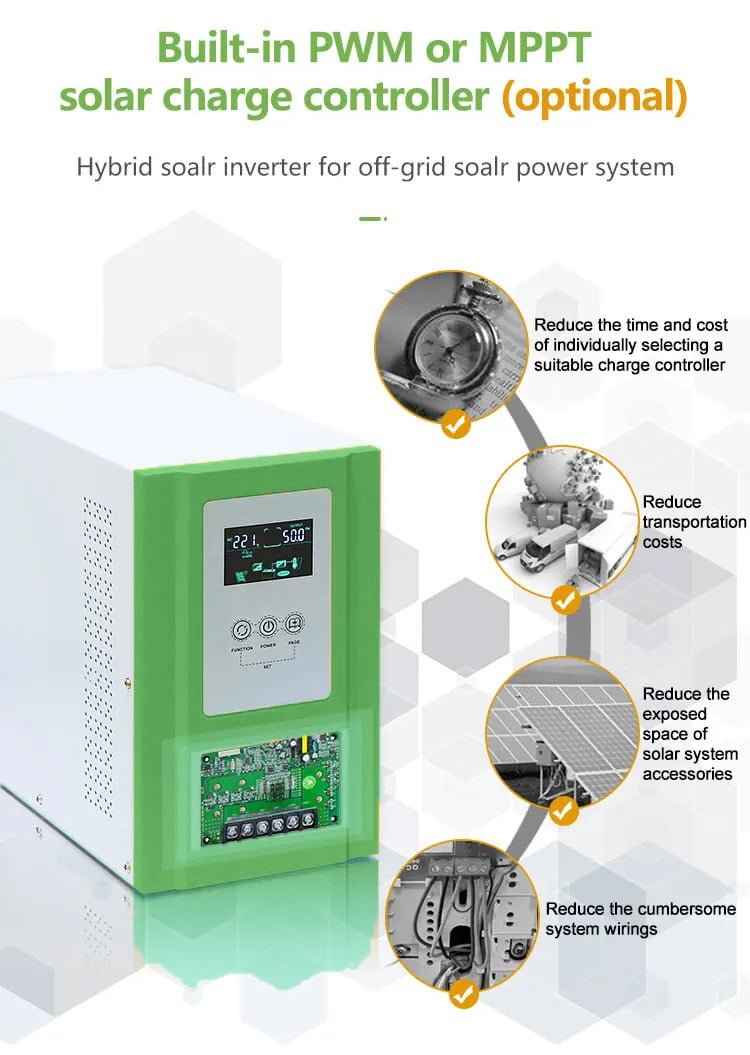
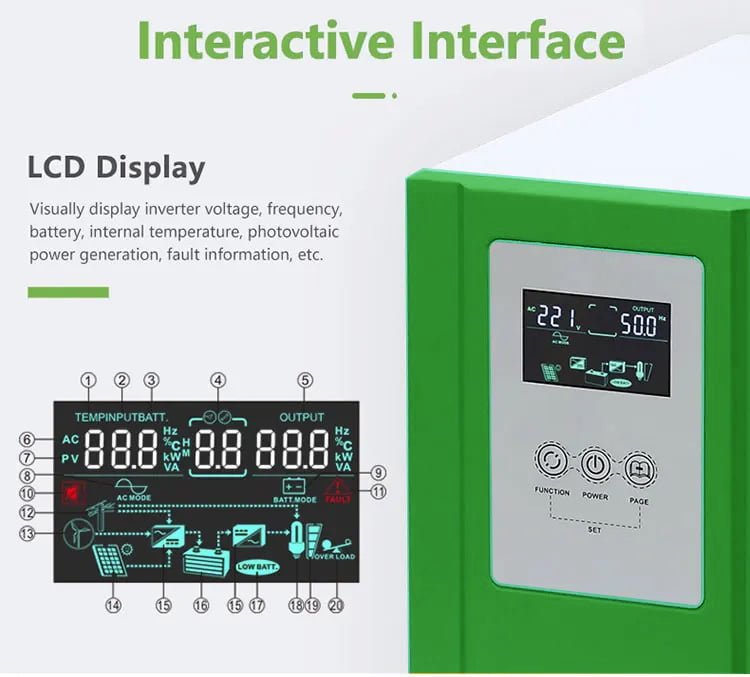
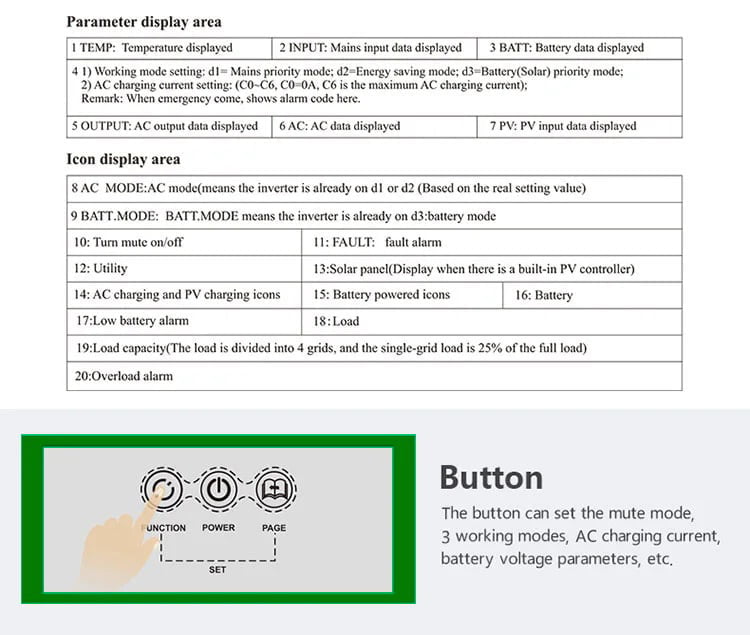
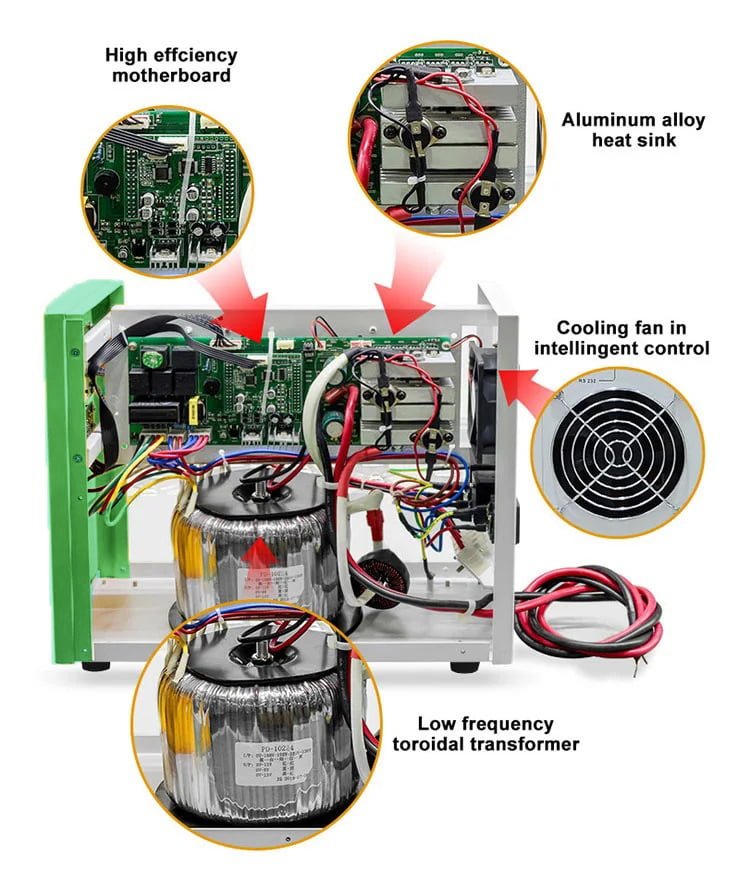


| Especificación | ||||
| Modelo WD/WD-T | 70112/24 (701) | 10212/24 (102) | 15224/48 (152) | |
| Potencia nominal | 700W | 1000W | 1500W | |
| Potencia máxima (20 ms) | 2100VA | 3000VA | 4500VA | |
| motor de arranque | 0,5 CV | 1HP | 1,5 CV | |
| Voltaje de la batería | 12/24 VCC | 12/24 VCC | 24/48 VCC | |
| Tamaño (L * W * Hmm) | 340x165x283 | |||
| Tamaño del embalaje (L*W*Hmm) | 405 x 230 x 340 (1 pieza) / 475 x 415 x 350 (2 piezas) | |||
| NO(kg) | 9.5 (1 pieza) | 10,5 (1 pieza) | 11,5 (1 pieza) | |
| GW(kg) | 11(1 pieza) | 12 (1 pieza) | 13(1 pieza) | |
| Metodo de instalacion | Torre | |||
| Aporte | Rango de voltaje de entrada de CC | 10,5-15 V CC (voltaje de batería única) | ||
| Rango de voltaje de entrada de CA | 73 V CA ~ 138 V CA (110 V CA) / 83 V CA ~ 148 V CA (120 V CA) / 145 V CA ~ 275 V CA (220 V CA) / 155 V CA ~ 285 V CA (230 V CA) / 165 V CA ~ 295 V CA (240 V CA) | |||
| Rango de frecuencia de entrada de CA | 45 Hz ~ 55 Hz (50 Hz) / 55 Hz ~ 65 Hz (60 Hz) | |||
| Corriente de carga máxima de CA | 0A~20A (según el modelo, la potencia de carga máxima es 1/4 de la potencia nominal) | |||
| Método de carga de CA | Tres etapas (corriente constante, voltaje constante, carga flotante) | |||
| Producción | Eficiencia (modo de batería) | ≥85% | ||
| Voltaje de salida (modo de batería) | 110VCA±2% / 120VCA±2% / 220VCA±2% / 230VCA±2% / 240VCA±2% | |||
| Frecuencia de salida (modo de batería) | 50 Hz ± 0,5 o 60 Hz ± 0,5 | |||
| Onda de salida (modo de batería) | Onda sinusoidal pura | |||
| Eficiencia (modo AC) | >99% | |||
| Voltaje de salida (modo CA) | 110VCA±10% / 120VCA±10% / 220VCA±10% / 230VCA±10% / 240VCA±10% | |||
| Frecuencia de salida (modo CA) | Seguir entrada | |||
| Distorsión de forma de onda de salida (Modo batería) | ≤3%(Carga lineal) | |||
| Sin pérdida de carga (modo de batería) | ≤1% potencia nominal | |||
| Sin pérdida de carga (modo AC) | Potencia nominal ≤2% (el cargador no funciona en modo CA) | |||
| Sin pérdida de carga (Modo de ahorro de energía) | ≤10W | |||
| Tipo de Batería (seleccionable) | Batería VLA | Voltaje de carga: 14,2 V; Voltaje de flotación: 13,8 V (voltaje de batería única) | ||
| Personaliza la batería | Los parámetros de carga y descarga de diferentes tipos de baterías se pueden personalizar de acuerdo con los requisitos del usuario (Los parámetros de carga y descarga de diferentes tipos de baterías se pueden configurar a través del panel de operación) | |||
| Proteccion | Alarma de bajo voltaje de batería | Valor predeterminado de fábrica: 11 V (voltaje de batería única) | ||
| Protección de bajo voltaje de la batería | Valor predeterminado de fábrica: 10,5 V (voltaje de batería individual) | |||
| Alarma de sobretensión de batería | Valor predeterminado de fábrica: 15 V (voltaje de batería única) | |||
| Protección contra sobretensión de la batería | Valor predeterminado de fábrica: 17 V (voltaje de batería individual) | |||
| Tensión de recuperación de sobretensión de batería | Valor predeterminado de fábrica: 14,5 V (voltaje de batería única) | |||
| Protección de sobrecarga de energía | Protección automática (modo batería), disyuntor o seguro (modo AC) | |||
| Protección de cortocircuito de salida del inversor | Protección automática (modo batería), disyuntor o seguro (modo AC) | |||
| Protección de temperatura | >90°C (apagar la salida) | |||
| Alarma | A | Condiciones de trabajo normales, el zumbador no tiene sonido de alarma | ||
| B | El zumbador suena 4 veces por segundo cuando falla la batería, anormalidad de voltaje, protección contra sobrecarga | |||
| C | Cuando la máquina se enciende por primera vez, el zumbador indicará 5 cuando la máquina esté normal. | |||
| Controlador solar interior (Opcional) | Modo de carga | PWM o MPPT | ||
| corriente de carga | 10 A ~ 60 A | |||
| Rango de voltaje de entrada fotovoltaica | PWM: 15 V-44 V (sistema de 12 V); 30 V-44 V (sistema de 24 V); 60 V-88 V (sistema de 48 V) MPPT: 15 V-120 V (sistema de 12 V); 30 V-120 V (sistema de 24 V); 60 V-120 V (sistema de 48 V) | |||
| Voltaje de entrada máximo de PV (Voc) (A la temperatura más baja) | PWM: 50 V (sistema de 12 V/24 V); 100 V (sistema de 48 V) / MPPT: 150 V (sistema de 12 V/24 V/48 V) | |||
| Potencia máxima del conjunto fotovoltaico | Sistema de 12 V: 140 W (10 A)/280 W (20 A)/420 W (30 A)/560 W (40 A)/700 W (50 A)/840 W (60 A); Sistema de 24 V: 280 W (10 A)/560 W (20 A)/840 W (30 A)/1120 W (40 A)/1400 W (50 A)/1680 W (60 A); Sistema de 48 V: 560 W (10 A)/1120 W (20 A)/1680 W (30 A)/2240 W (40 A)/2800 W (50 A)/3360 W (60 A) | |||
| pérdida en espera | ≤3W | |||
| Máxima eficiencia de conversión | >95% | |||
| Modo de trabajo | Batería primero/CA primero/modo de ahorro de energía | |||
| Tiempo de transferencia | ≤4ms | |||
| Mostrar | LCD | |||
| método térmico | Ventilador de refrigeración en control inteligente | |||
| Comunicación (Opcional) | RS485/APP (monitoreo WIFI o monitoreo GPRS) | |||
La potencia de la serie WD es de 700 W a 40 kW. Si desea obtener más información, por favor póngase en contacto con nosotros. | ||||
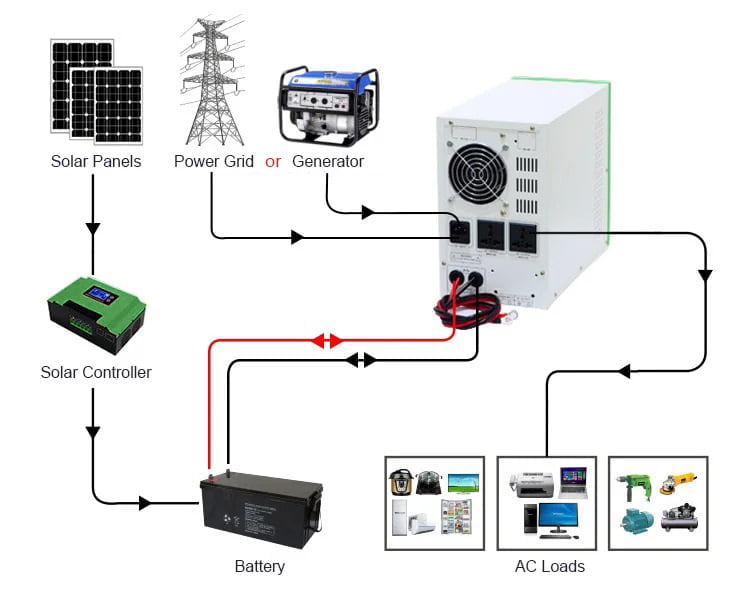
1. El número y la capacidad de la batería deben configurarse de acuerdo con el voltaje nominal del sistema de energía solar o del inversor;
2. Ofrecemos 3 modos de trabajo opcionales:
01 Modo de prioridad de red: Cuando la red y la batería están conectadas al inversor, la red suministrará energía a las cargas directamente después de que se estabilice el voltaje y cargará las baterías a través del inversor. Cuando se corta la red, la batería continuará suministrando energía automáticamente a través del inversor.
02 Modo de ahorro de energía: Si la potencia de las cargas de CA conectadas es inferior a 5% de la potencia nominal del inversor, no habrá salida del inversor. Solo funciona el chip del inversor. El consumo de energía del inversor es solo de 1 a 6 W. La pantalla LCD muestra el voltaje de salida 0. Si la potencia de las cargas conectadas es superior a 5%, en 5 s el inversor convertirá automáticamente CC a CA para suministrar energía a las cargas. La pantalla LCD muestra el voltaje de salida.
03 Modo de prioridad de batería: Cuando la red y la batería están conectadas al inversor, la batería suministrará energía a las cargas primero. Cuando la capacidad de la batería no sea suficiente, la red seguirá suministrando energía automáticamente.
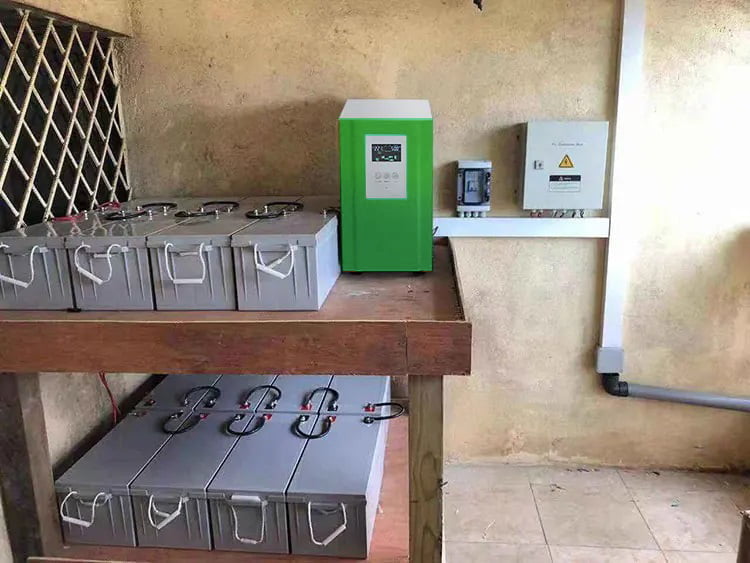
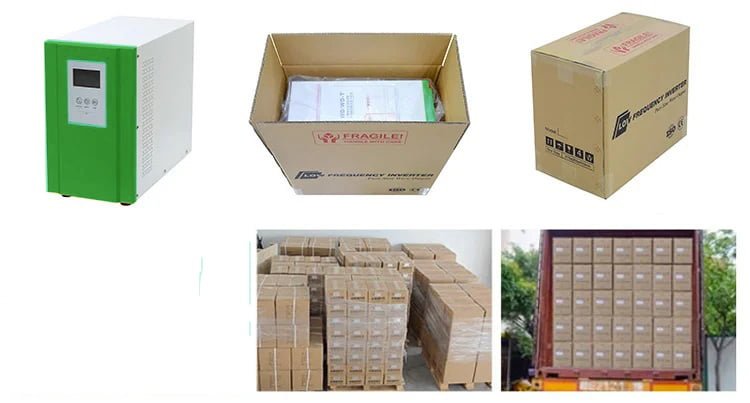
Paquete
Caja de cartón para embalaje, o caja de madera recomendada para muestras para proteger en el transporte.
Envío
1. Fedex/DHL/TNT/UPS para muestras, puerta a puerta.
2. Por aire o por mar para mercancías en lotes, para CFL, recepción en aeropuerto/puerto.
3. Clientes que especifiquen transportistas o métodos de envío negociables.
4. Plazo de entrega: 7 días para muestras; 10 a 25 días para lotes.

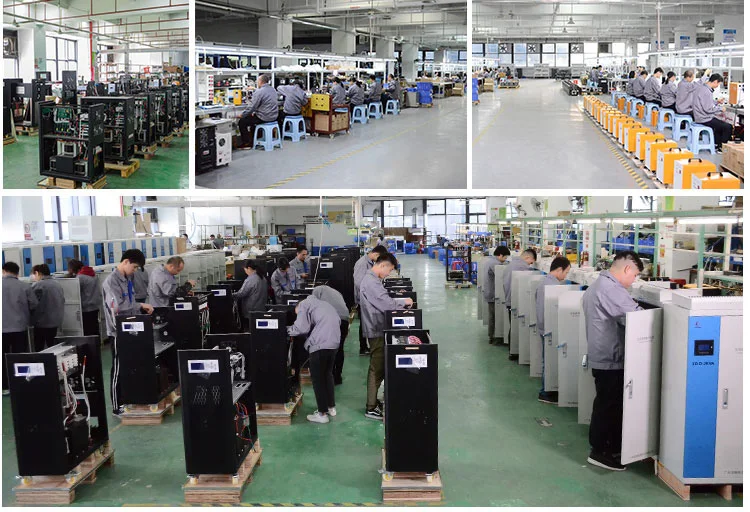
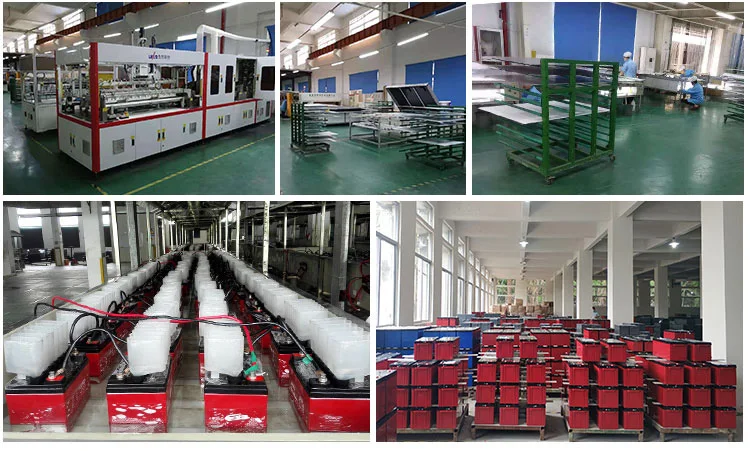

A: ¿Sus inversores tienen salida de onda sinusoidal pura?
P: R Sí, todas son ondas sinusoidales puras reales.
A: ¿Qué tipo de salida puedes hacer?
P: Normalmente fabricamos inversores con autoadaptación de 110 V, 115 V, 120 V, 220 V, 230 V y 240 V, 50/60 Hz. Si tiene requisitos especiales, infórmenos para que podamos asesorarlo.
A: ¿Cuál es la diferencia entre inversor de baja frecuencia y inversor de alta frecuencia?
P: El inversor de baja frecuencia tiene varias protecciones, fuerte capacidad de adaptación al medio ambiente, más confiable, con regulación de voltaje.
A: ¿Cuál es la diferencia entre un inversor de onda sinusoidal pura y un inversor de onda sinusoidal modificada?
P: El inversor de salida de onda sinusoidal pura es tan bueno como la red eléctrica pública. Incluso mejor. Baja tasa de reparación, larga vida útil, sin contaminación armónica, respetuoso con el medio ambiente y con los electrodomésticos protegidos.
La salida de onda sinusoidal modificada tiene un impacto negativo en los electrodomésticos y no puede soportar carga inductiva, como aire acondicionado, refrigerador, etc. A ciertos circuitos de control de motores no les gusta la onda modificada.
A: ¿Qué electrodomésticos pueden cargar sus inversores?
P: Nuestro inversor se puede utilizar en electrodomésticos, oficinas, electrodomésticos agrícolas y otras cargas inductivas como refrigeradores, aires acondicionados, bombas de agua, etc.
A: ¿Puede imprimir el logotipo de nuestra empresa en inversores, placas de identificación y embalajes?
P: Sí, aceptamos pedidos OEM.
A: ¿Cómo elegir un inversor adecuado?
P: Cuéntenos su demanda y luego nuestro equipo de ventas le recomendará un inversor adecuado.
A: ¿Cómo solucionar el problema técnico?
P: Asesoría postventa las 24 horas solo para usted y para que su problema se resuelva fácilmente.
A: ¿Necesito un inversor de corriente?
P: En realidad, no. Este es el único componente de un sistema de energía solar que no es absolutamente necesario. Sin embargo, si no utiliza uno, no tendrá 220 o 230 voltios de CA y tendrá que utilizar únicamente la energía de la batería. Esto puede ser aceptable en una casa rodante o cabaña pequeña, pero la mayoría de las personas prefieren utilizar aparatos de CA normales.
A: ¿Cuál es la diferencia entre inversores de 12, 24 y 48 voltios?
P: Esto se refiere al voltaje de entrada del banco de baterías. La consideración principal es que a voltajes más altos la corriente es menor, por lo que se pueden utilizar cables más pequeños entre el conjunto de paneles solares y el banco de baterías. Por supuesto, cuando se decide el voltaje del sistema, los paneles solares, el inversor y el banco de baterías deben utilizar el mismo voltaje.
A: ¿Qué hacer si el producto está roto?
P: Si algún producto es defectuoso, puede enviarnos una imagen o un video. Lo estudiaremos y le proporcionaremos repuestos de la placa PCB de forma gratuita para el servicio posventa.



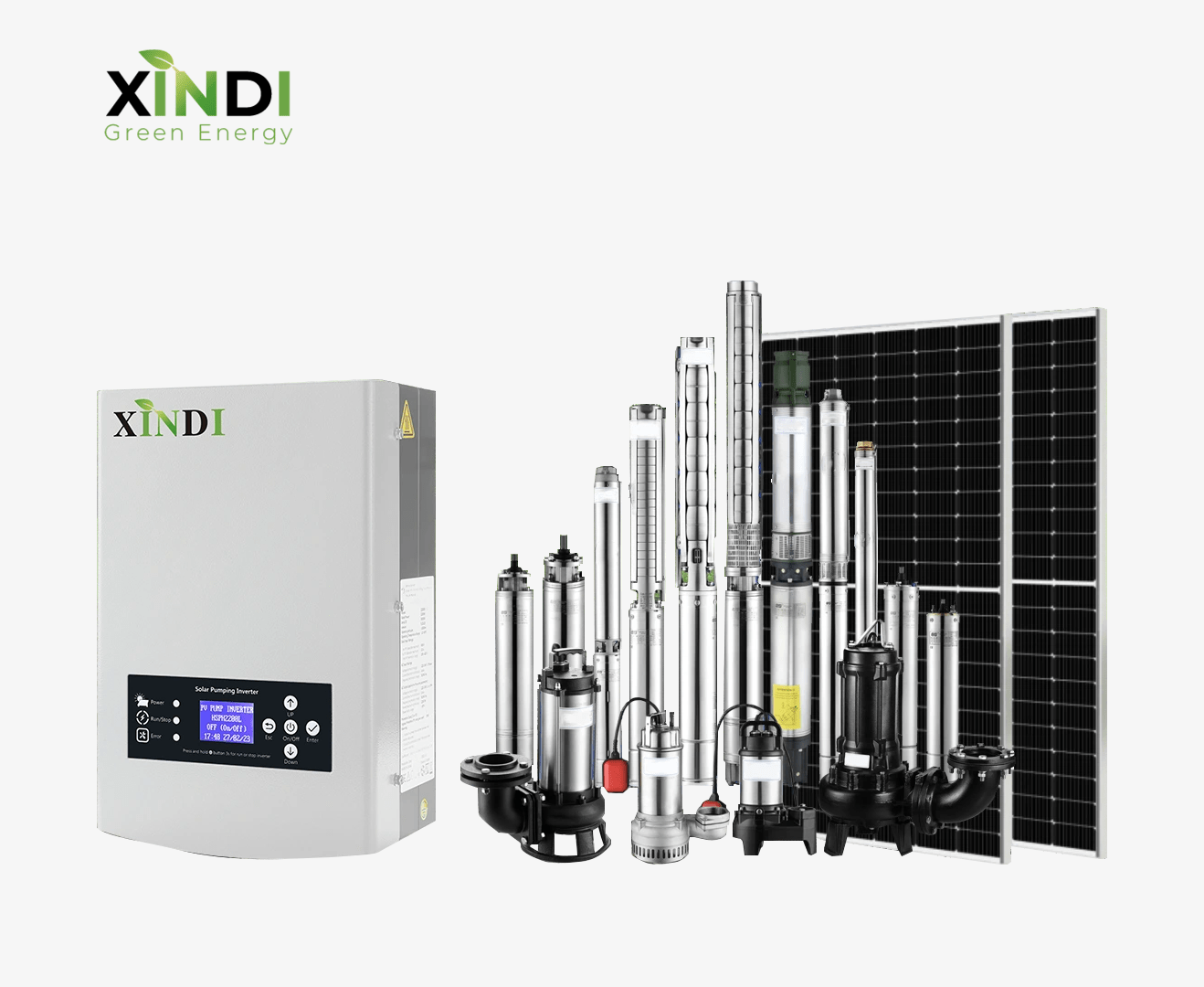
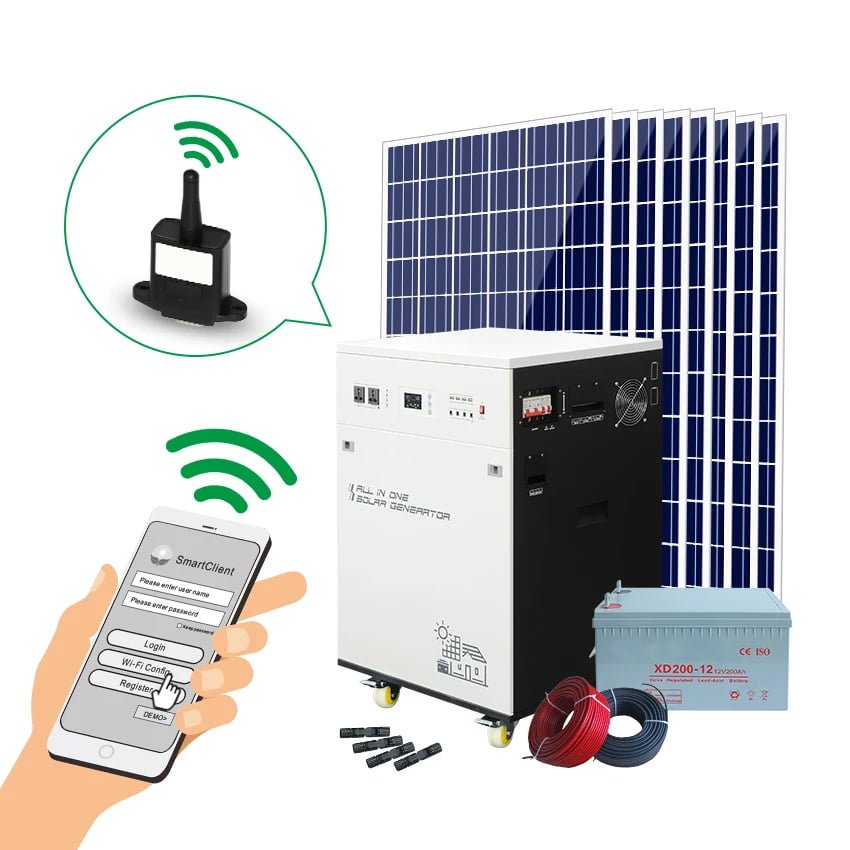
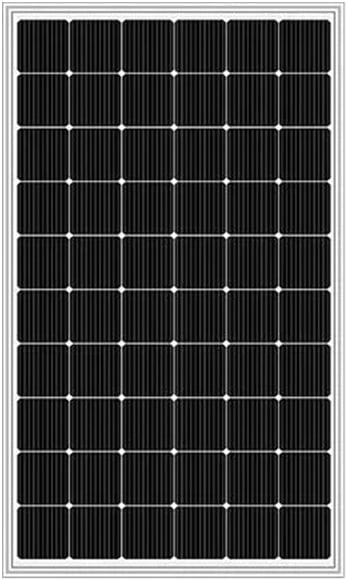
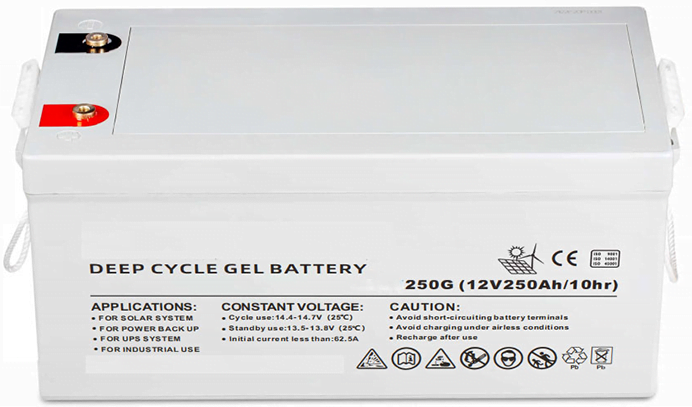
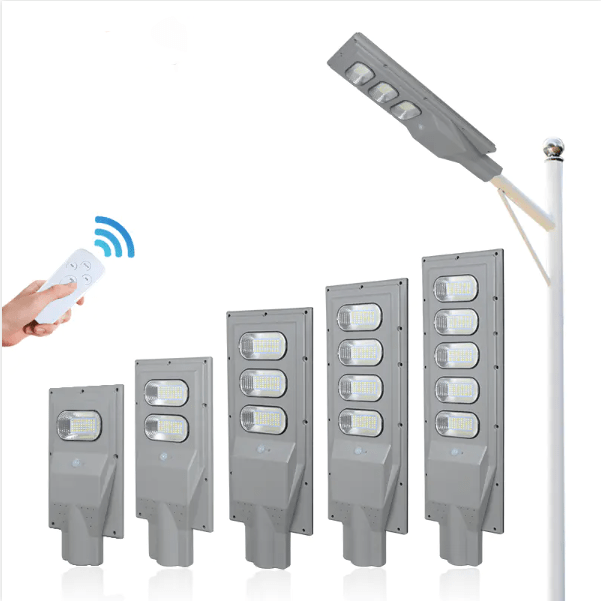
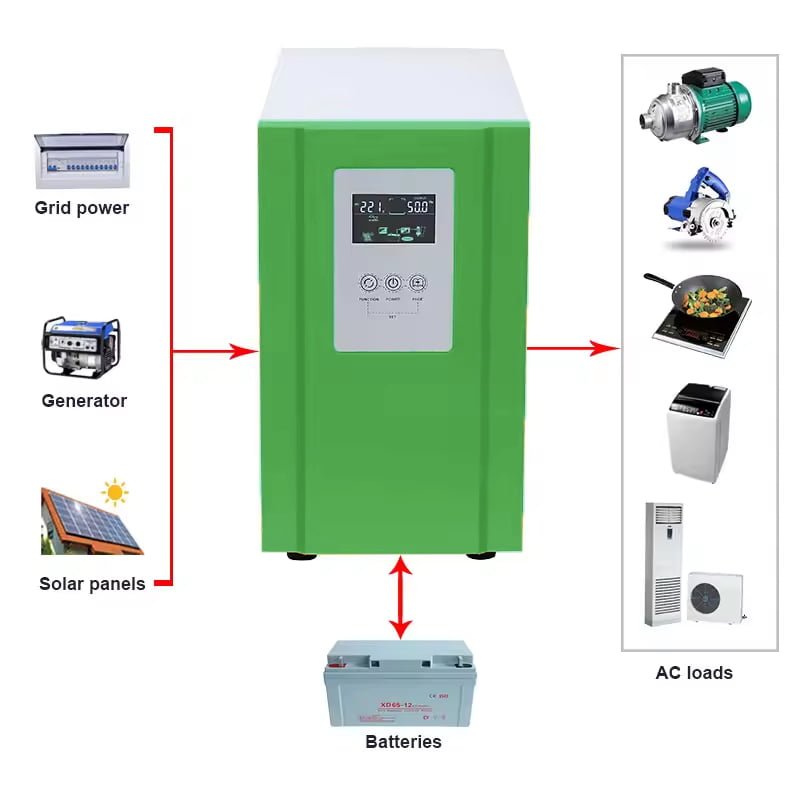
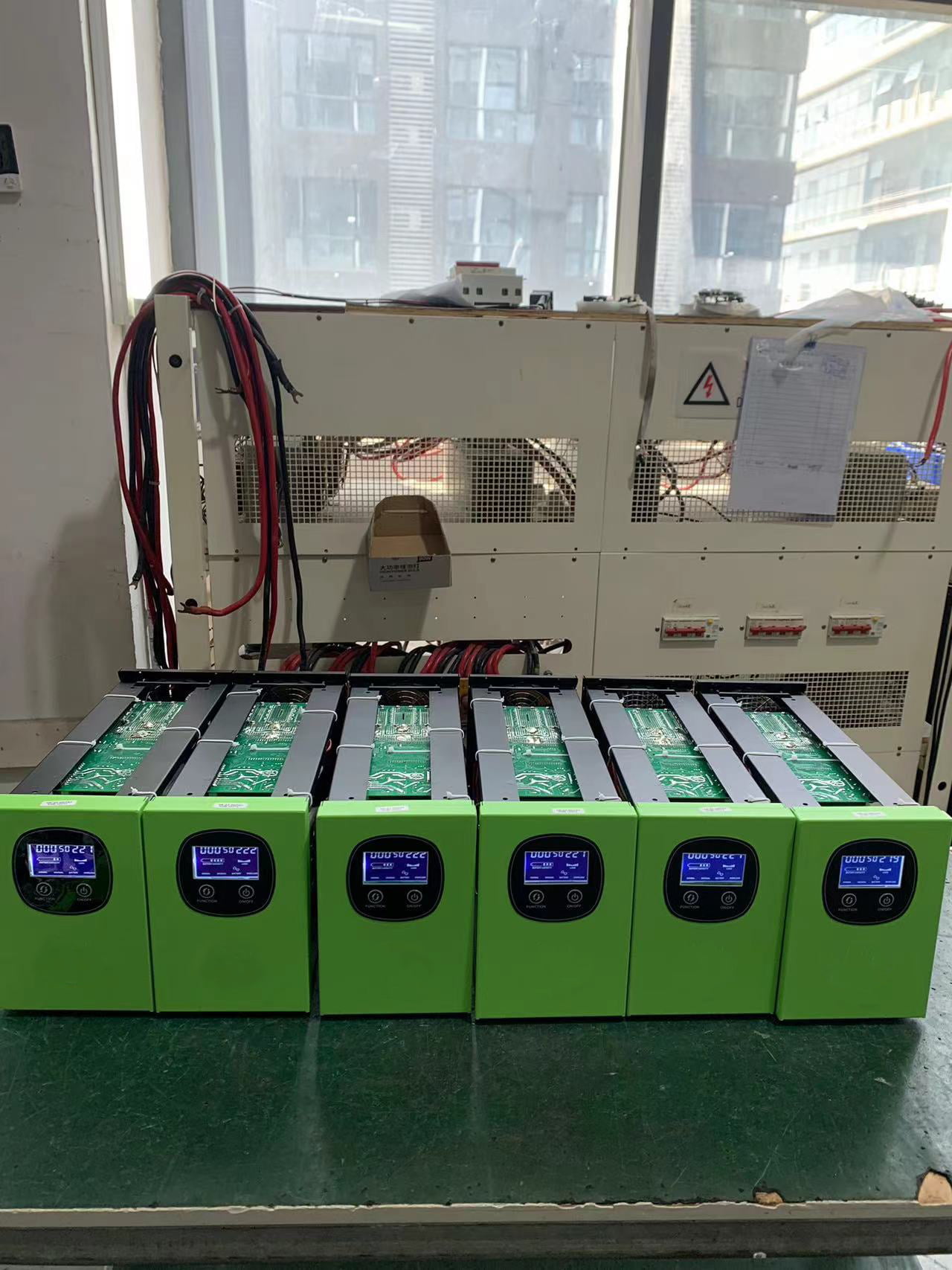
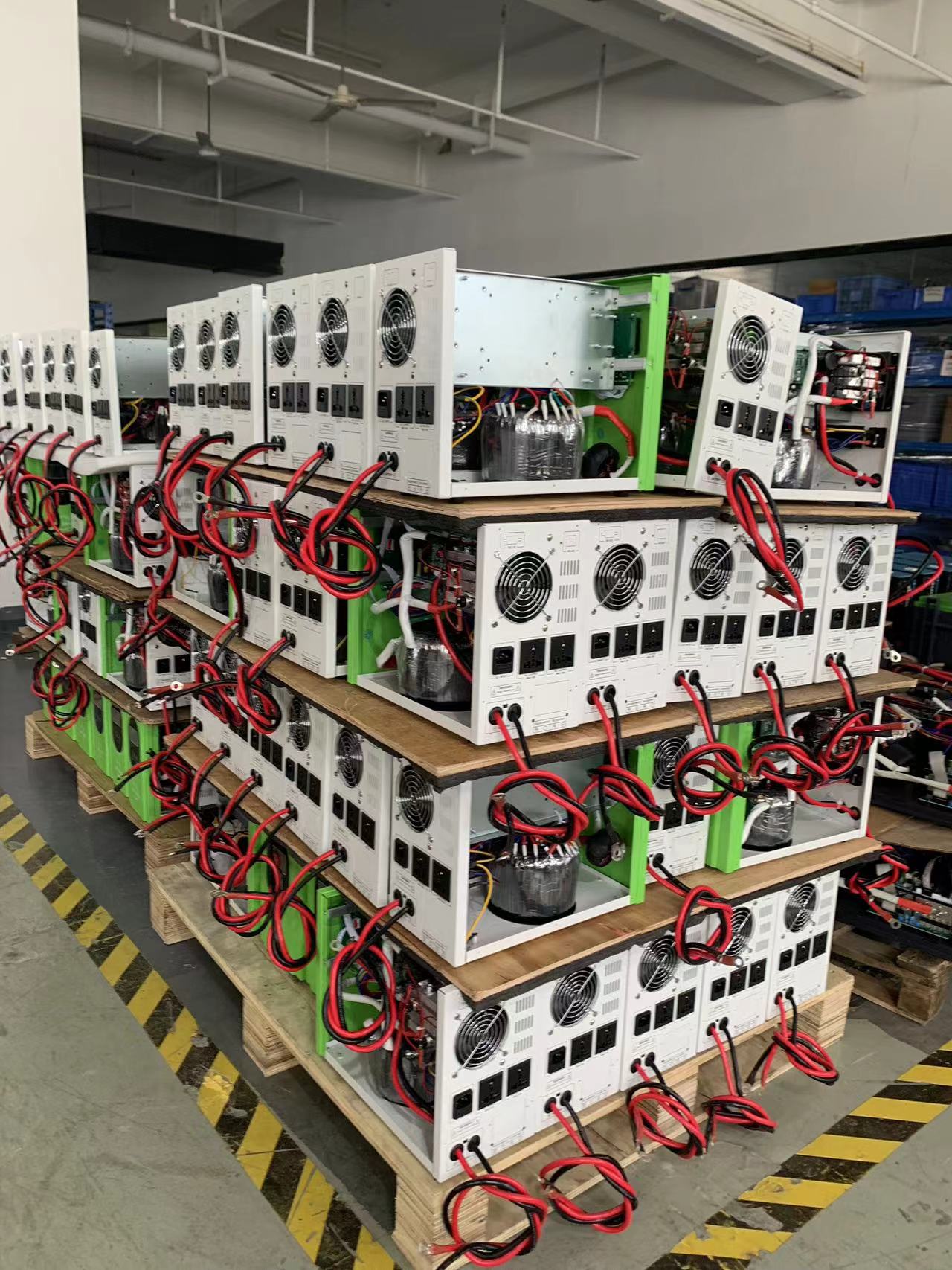
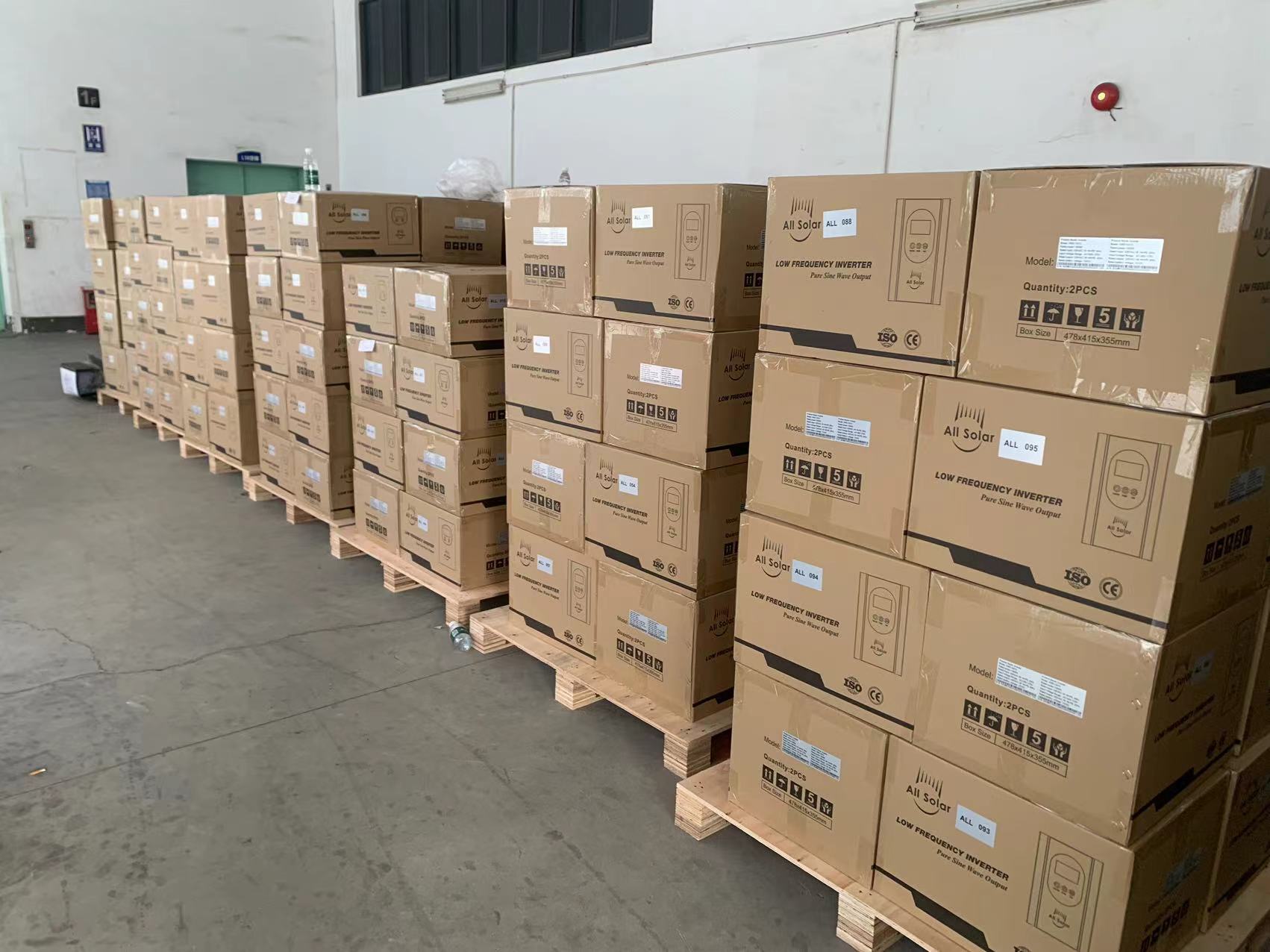
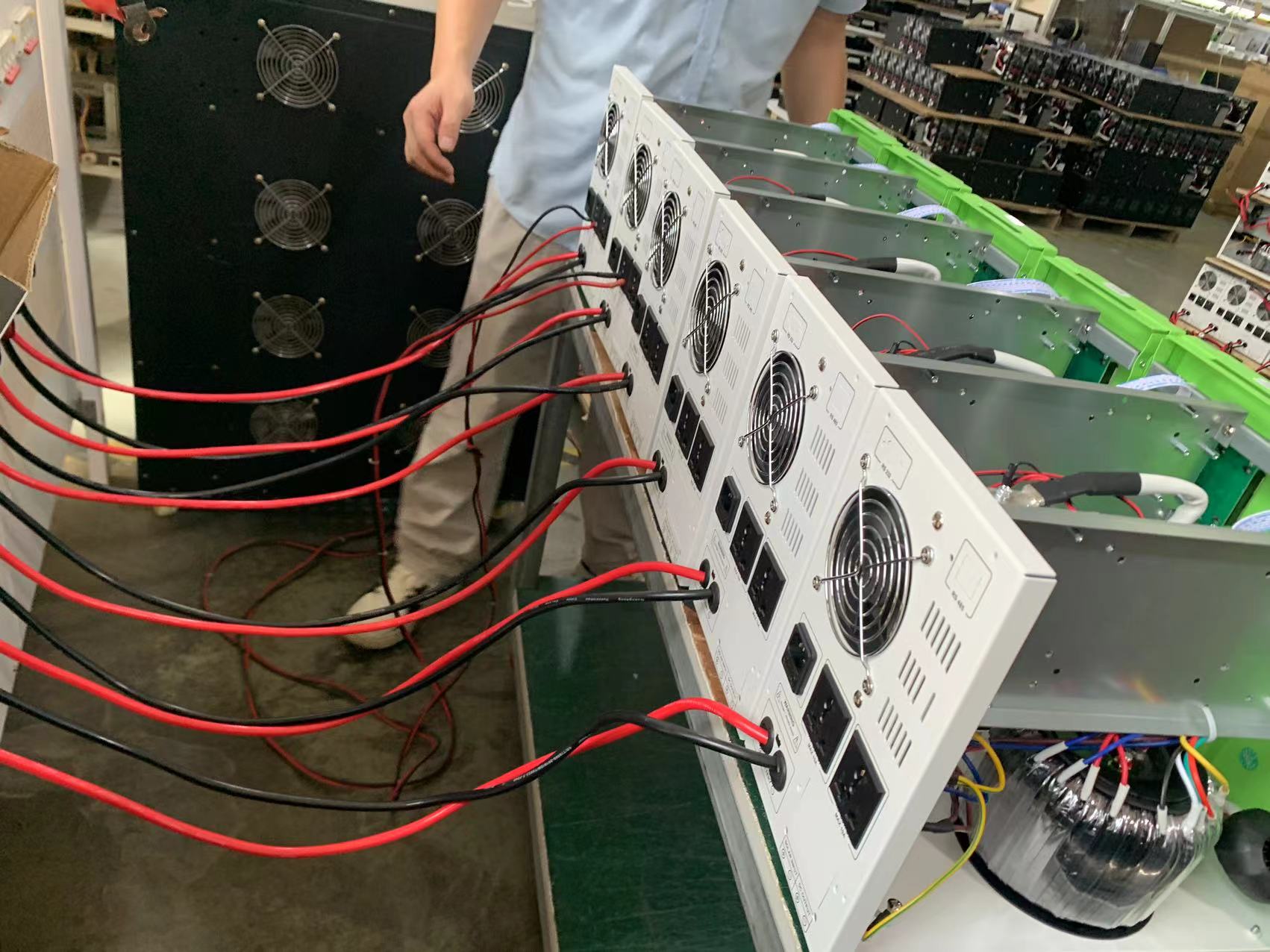
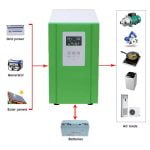
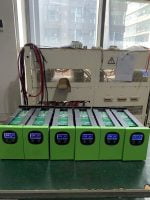
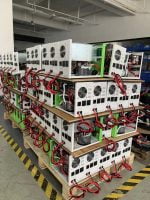
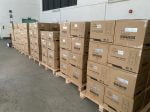
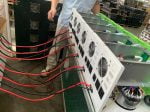

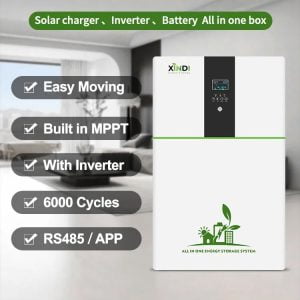
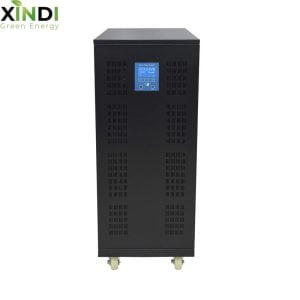
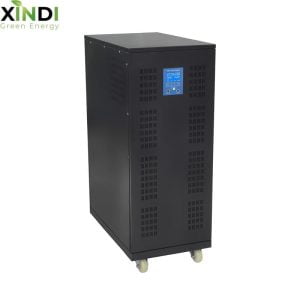
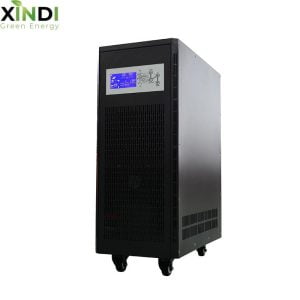
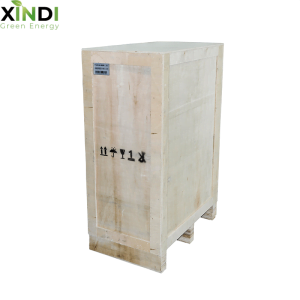

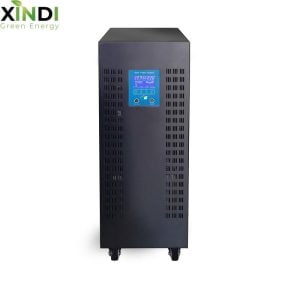
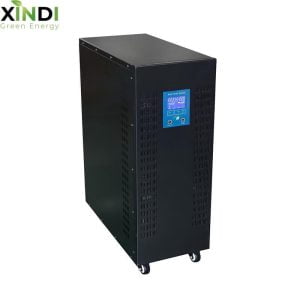
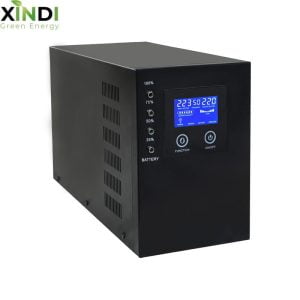

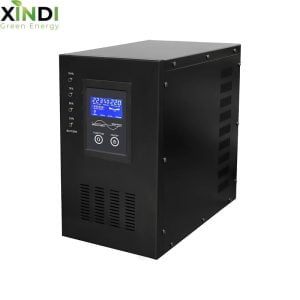
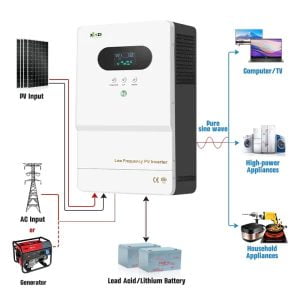
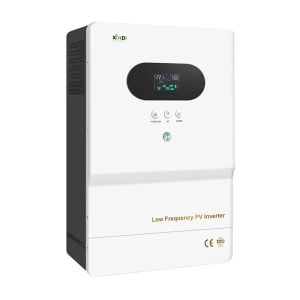
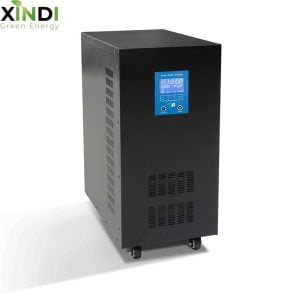

Valoraciones
No hay valoraciones aún.